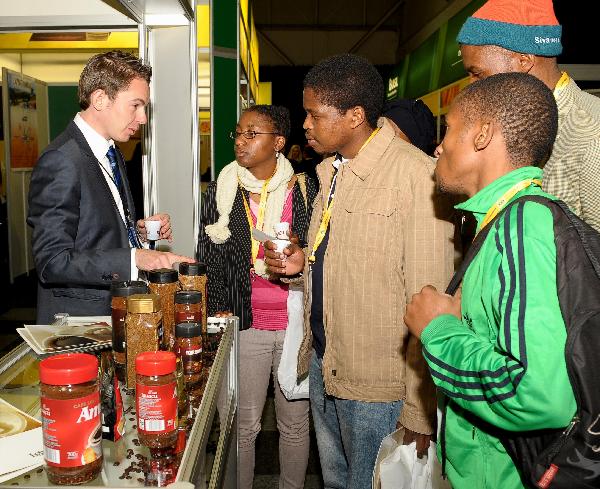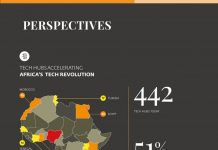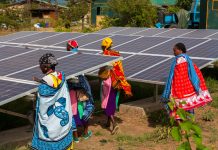The 2014 edition of Africa’s Big Seven, the continent’s leading food and beverage industry event, took place amid growing optimism about Africa’s food and agriculture systems and about its potential as a market for food, beverages, and industry inputs.
Held June 22-24 in Johannesburg, South Africa, AB7, as the event is known, saw Italy and Poland hosting pavilions for the first time. They joined the growing list of nations that showcase products their countries have to offer the food and beverage industry.
AB7 comprises seven co-located shows – Pan Africa Retail Trade Exhibition; AgriFood; FoodTech Africa; DrinkTech Africa, Interbake Africa; Retail Solutions Africa; and FoodBiz Africa. Each is focused on specific sectors of the food and beverage industry – baking products and equipment, food production and manufacturing, bottling and packaging, catering and hospitality, flavors and additives, merchandising and retail systems, and everything in between.
Now in its 12th year, the 2014 show came half year into the Year of Agriculture and Food Security in Africa, and six months after a high-level dialogue on “Harnessing Innovation for African Agriculture and Food Systems: Meeting the Challenges and Designing for the 21st Century,” convened by the African Union Commission and the Kofi Annan Foundation, with support form the Bill & Melinda Gates Foundation.
From November 25 to 26, 2013, at the African Union Conference Center in Addis Ababa, Ethiopia, a select group of African and other global leaders reflected on successes and challenges in African agricultural development, and outlined approaches to harness the potential of the continent’s agriculture and food systems as a driver of economic development. Read them here.
“Together, we are witnessing the dawning of a new era for African agriculture and food systems,” African heads of state said in a collective statement in July 2012, when, assembled at the African Union in Addis Ababa for their 19th Ordinary Session, they declared 2014 “The Year of Agriculture and Food Security in Africa.”
A summary of findings from the November 2013 dialogue notes that since 2000, annual agricultural growth rates in Nigeria and Ethiopia have been above 6 percent, and between 4.0 and 5.2 percent in Burkina Faso, Sierra Leone, Tanzania, and Ghana. The continental average is 3.8 percent.
Agriculture contributes 26 percent to Ghana’s gross domestic product and as much as 46 percent to Ethiopia’s, compared with an average 14 percent continent-wide.
Urban areas, which represent roughly 60 percent of the African food economy, thanks to a new middle class with more disposable income, are contributing to robust demand for new foods, fast foods and replacement alternatives for home meals. That, in turn, is driving innovation and entrepreneurship in the food supply chain.
In West Africa, the urban share of the overall population is about 50 percent, but the urban share of all food consumption is about 60 percent, and the share in purchased/marketed food is about 70 percent. In East and Southern Africa, the respective urban shares are 30 percent (population), 40 percent (total food), and 50 percent (marketed food).
A farmer who produces and sells meat, dairy, or fruit to towns and cities earns five to ten times more per hectare than grains.
Agricultural entrepreneurship is on the rise, with small and medium-size African businesses emerging as processors, distributors, and in other critical roles along the supply chain. Some attest to an Emerging ‘Quiet Revolution’ in African Agri-Food Systems.
Local innovations, often featured in AfricaStrictlyBusiness.com’s FABA (For Africa By Africans) column, are enhancing productivity and income for farmers. These include:
- An agroforestry model farm, which produces innovative sources of income from moringa leaves and seeds and jatropha seeds.
- The Farmking Mobile Multi-Crop Processor, which reduces both the time it takes to process tubers such as cassava, sweet potatoes, soy, shea nuts, grains and cereals, and the amount of waste produced in processing.
- Fonio Husker Machine, an electric and thermal-powered machine that husks can husk 50 kilos of fonio, a staple grain, per hour and leaves little sand in the husked product, whereas a woman can process only one to two kilos by hand in the same time, and must use about 15 liters of water to remove the sand.
- Horticultural Tele-Irrigation, which allows growers to remotely control the irrigation of their fields at any time and from any location using a mobile phone, while enabling the collection in real time of meteorological and hydrological data, including temperature, humidity, rainfall, solar radiation and wind speed, which can be used to determine if a field needs to be irrigated at a given moment of the day.
- iCow, a mobile phone agricultural information service to simplify farming methods and increase milk production for small livestock farmers in Kenya.
- MFarm, a mobile phone software that provides weather conditions and up-to-date market prices to farmers in real time.
At government level, Nigeria is taking a new approach to building post-harvest processing and value addition that aims to encourage private sector investment through the creation of staple crop processing zones in selected “food baskets” around the country. The zones offer tax breaks on processing equipment, tax holidays for food processors, and public investment in infrastructure – electricity, irrigation, flood control, road, rail, and telecommunications.
The Tanzanian government purchases large-volume cultivation machinery, such as power tillers, tractors, planters, and harvesters, which it provides to producers to support national goals for increasing cultivation.
In Senegal, local farmers are producing branded, packaged millet and sorghum products to meet growing urban demand.
Ethiopia’s Commodity Exchange (ECX) disseminates real-time information on central wholesale prices of commodities, benefitting farmers with forecasting and production, technology adoption, and marketing decisions.
Yet, Africa has the highest prevalence of undernourishment, with an estimated one in four people without enough food. In sub-Saharan Africa alone, 54 million children under five years of age lack the nutrition necessary for proper health and development.
With Africa’s population expected to more than double by 2050, there is concern that water scarcity, climate change and other natural resource constraints could have damaging effects on agricultural production, and therefore on the continent’s food and nutrition security.
It’s a fear that doesn’t have to become a reality, according to participants in the November discussion in Ethiopia. Home to 60 percent of the world’s uncultivated arable land, and with promising transformation already under way, Africa has the agricultural potential both feed itself and grow a surplus to help provide global food security.
“It requires a broad perspective – looking at the needs of smallholder farmers as part of food systems and supply chains and considering agricultural productivity, food security, and nutrition in the context of overall economic development and social stability,” the participants said. “Translating individual successes into lasting and positive trends will take leadership and vision coupled with investment and implementation.”













